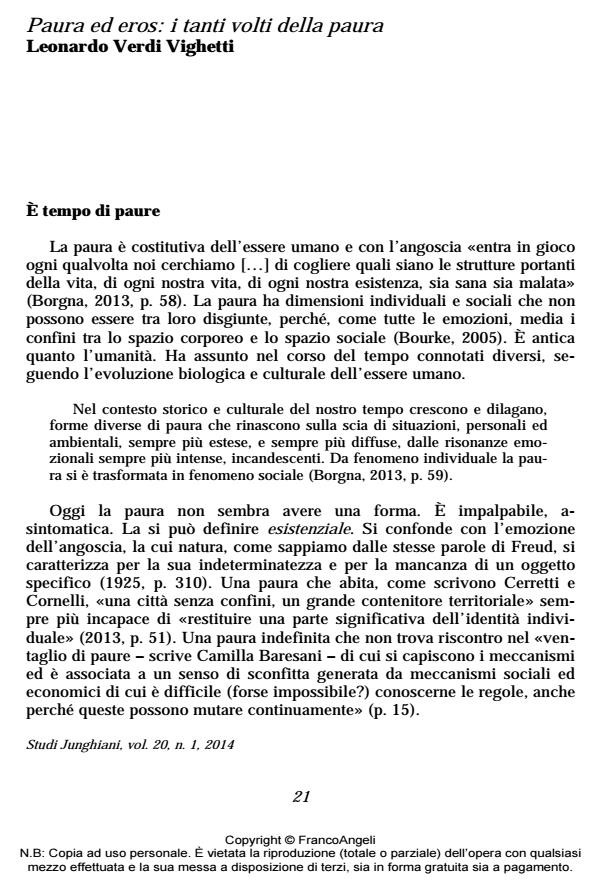Fear and Eros: the many faces of fear
Journal title STUDI JUNGHIANI
Author/s Vighetti Leonardo Verdi
Publishing Year 2014 Issue 2014/39
Language Italian Pages 15 P. 21-35 File size 75 KB
DOI 10.3280/JUN2014-039002
DOI is like a bar code for intellectual property: to have more infomation
click here
Below, you can see the article first page
If you want to buy this article in PDF format, you can do it, following the instructions to buy download credits

FrancoAngeli is member of Publishers International Linking Association, Inc (PILA), a not-for-profit association which run the CrossRef service enabling links to and from online scholarly content.
We live in a time when fear becomes impalpable and is associated with a sense of defeat, the roots of which are the loss of the bonds of brotherhood and a lack of sense in our lives. Individually we experience fear as a loss of protection by the self. The individual and the social sides of fear find their intersection in the affective loss of what is fundamental: Eros. Fear and Eros are closely associated: the lack of Eros generates fear, but also his presence can elicit fear, when Eros is injured. Fear challenges the analyst. The transition from fear to Eros can only occur after embracing the fear of the patient, making it an understandable experience that can be dramatized in the analytic setting. Clinical references testify the experience of the link between fear and Eros, which patients live in early abandonment, in paternal harassments, in the loneliness of a childhood spent in containing the family drama.
Keywords: Fear, anxiety, panic, Eros, synchronicity, meaning
Vighetti Leonardo Verdi, Paura ed eros: i tanti volti della paura in "STUDI JUNGHIANI" 39/2014, pp 21-35, DOI: 10.3280/JUN2014-039002